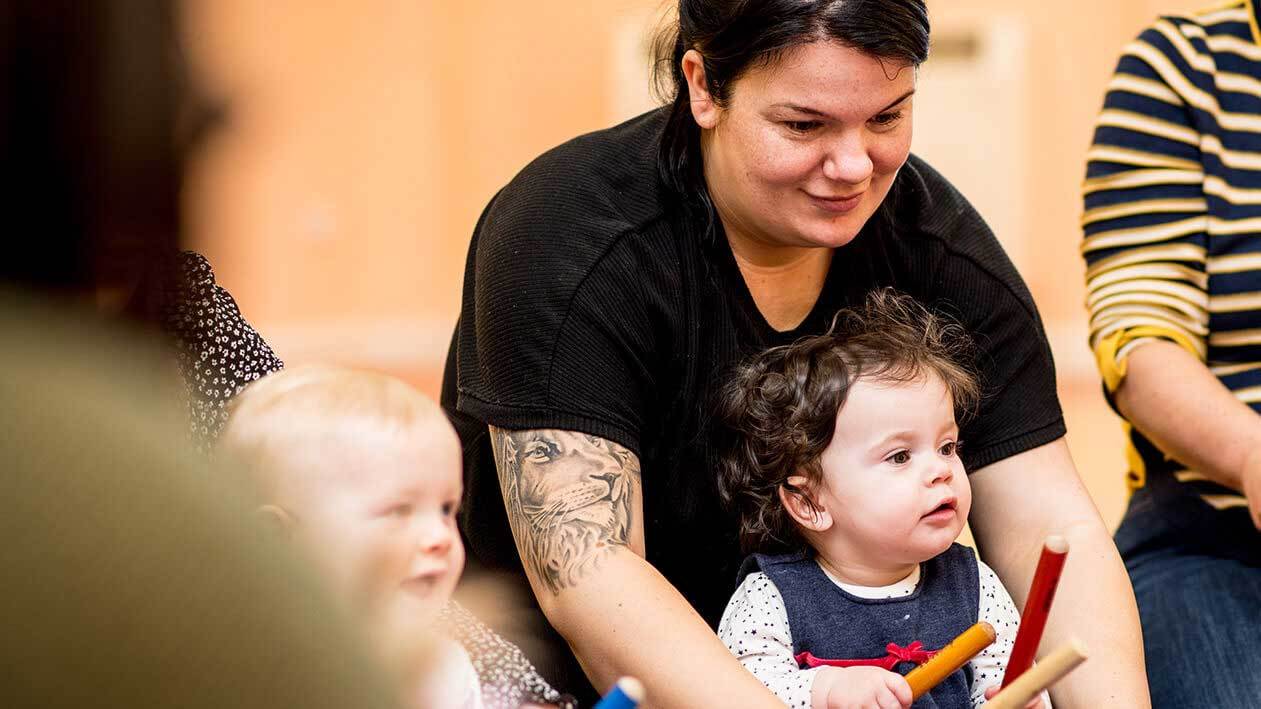Rhymes in early childhood
Published on: 15 November 2018 Author: Dr Sarah Kuppen, chartered psychologist
Nursery rhymes are a common feature of childhood. Whether chanted, read, spoken or sung - children really enjoy the rhythm and repetition.
Rhymes also offer educational benefits. Spoken and sung rhymes are not only an opportunity for closeness and fun, they deliver spoken language in a way that’s easy for children to engage with. The repetition, language, sounds and rhythm, help children to predict what’s coming next. This can make the words of the rhyme easier to remember, and highlight the individual sounds, which can pave the way for learning to read.

Rhymes and babies
Studies on language development, have highlighted the importance of sensitivity to rythm in speech. When a baby first comes into contact with spoken language, it is heard as a string of meaningless sounds. In order to develop understanding, the child must break down the stream of sounds into meaningful segments, or words. Experiments suggest that babies have a tool kit, including sensitivity to speech rhythm, which helps them to do this. For example, children as young as nine months may use cues, such as when a syllable is stressed, to alert them to the start of new words. This is very effective, as more than 90 percent of two syllable English words begin with a stressed syllable. The importance of rhythmic cues suggests that hearing rhythms, such as those in nursery rhymes, could support children’s language development.
Research now points to the benefits of a rich spoken language environment in childhood. For example, infant directed speech (IDS), or what some people call baby talk, may positively support a child’s development. IDS contains fewer words, more repetitions, larger changes in pitch and rhythm, and longer content words than adult directed speech. Research shows that many adults, siblings and individuals with no previous experience of children, use IDS across languages and cultures. Not only do babies prefer to listen to it, infant directed speech has language-supporting features and may help with vocabulary development. While we don’t know the specific impact of rhymes, the repetition, wide pitch contours and increased emphasis on content words overlaps with IDS, and the benefits are likely to be shared.
Rhymes in the early years
For many, sharing a book with a child is a cherished activity. Children love rhyming texts and will actively chose them over other books. The pleasure of the rhyme is in the strong rhythm, created by the alternation of stressed and unstressed syllables. Repetition and predictability can make both the rhyming word and the whole rhyming text itself more memorable. Experience with rhyming words also leads to rhyme awareness. Identifying or making words that rhyme. Studies have shown that in the early years, a child’s rhyme awareness is predictive of the ease with which they will learn to read.
A combination of enjoyment and educational benefits make sharing and reciting rhymes an ideal first introduction to the sounds in language for the early years.
Dr Sarah Kuppen, chartered psychologist, author of Little Kids, Big Dilemmas: Your parenting problems solved by science www.littledilemmas.com
Topics: Rhyme, Welsh language, Wales
